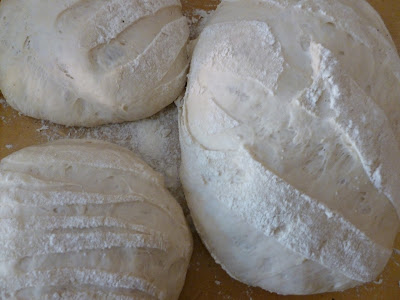I haven’t blogged this last month, but I have certainly been eating. Winter staples, repeated ad infinitum, which we fail to bore of, and so banal I haven’t photographed them are: Puy Lentils, seasoned with Herbs, Garlic, a dash of Balsamic, of Soy Sauce, of Red Wine, sometimes Bacon... and Cabbage, cooked long and slow in home-made Apple Cider Vinegar, with Carrots or Onions, Beetroot or Marrow, Caraway or Sage, whatever comes to hand. These bring repeated joy and are quite my favourite foods of a frugal winter, nourishing and full of simple vitamins, piping hot coursing right to the soul…
There have however been occasions of more flamboyant feasting, and, while I failed to note down the exact recipes, I have some photos, and share them here:
Perdriz aux Choux - Patridge cooked in Cabbage
The Partridge a gift, the recipe was taken directly from Elizabeth David's French Country Cooking. It is the same recipe I used for the Rabbit in October, and you can find it here. The only adulterations were the additions of Russet Apples and Jerusalem Artichokes to Mrs David's recipe, to not use Sugar, and to cook it in Apple Cider Vinegar.
Beef Stouties with Flageolet Beans
These come from Charcutier Jules of De-Lish. The Stouties I believe are Beef and Horseradish Sausages soaked in Stout - he'll no doubt correct me. I cooked them in Onions and a can of Bitter, added the liquid to some Flageolet Beans (cooked previously with herbs), then plunged the whole lot together and baked it in the oven. This was eaten with Jerusalem Artichoke and Potato Mash and slow-cooked sweet vinegary Cabbage.
Celeriac and Marrow Gratin
This recipe is originally, I hear, a Hugh Fearnley-Whittingstall creation. I picked it up on Clare Island, and added the Marrow to fill the pot. Steam thinly sliced Celeriac and fry off peeled half moons of Marrow. Layer the lot with Olive Oil, Creme Fraiche, Yogurt, Garlic, Chilli, Salt and Pepper in an ovenproof dish. Cover and cook slowly for about forty minutes. At the last minute top with Curd or similar Fresh Cheese and place under the grill.
This is very rich and doesn't really need an accompaniment - some bread perhaps to mop it up, or a bowl of rice.
Woodcock on Toast with Pickled Crabapples
Le Piece de Resistance - I have always thought Woodcock on Toast quite the sexiest rustic dish, though, need I say, it is utterly inappropriate for the squeamish. The bird is cooked with all its innards minus the gizzard (remove using your little finger once plucked), its beak spiked through the body, holding the legs together and a piece of bacon over the breast. A mere eight to twenty minutes, if that, then the Bacon is removed, the guts scraped out, fried with the chopped Bacon, Butter and Port, Salt and Pepper, then spread on toast. The Woodcock is sat beside, on a separate piece of Toast.
The whole bird is eaten and the ritual approaches that of the Ortolan Bunting. It is an utter dream, the flavours are rich, indeed, exquisite. Despite being miniscule, the dish is very filling, often served as a starter I would suggest this as a main, perhaps with something sharp and light aterwards to cut through the heavenly richness. Serve with a deep peppery and robust Red Wine. Here we ate it with the Pickled Crabapples, which stood up superbly and smartly complemented the rich flavours of the bird.


























































